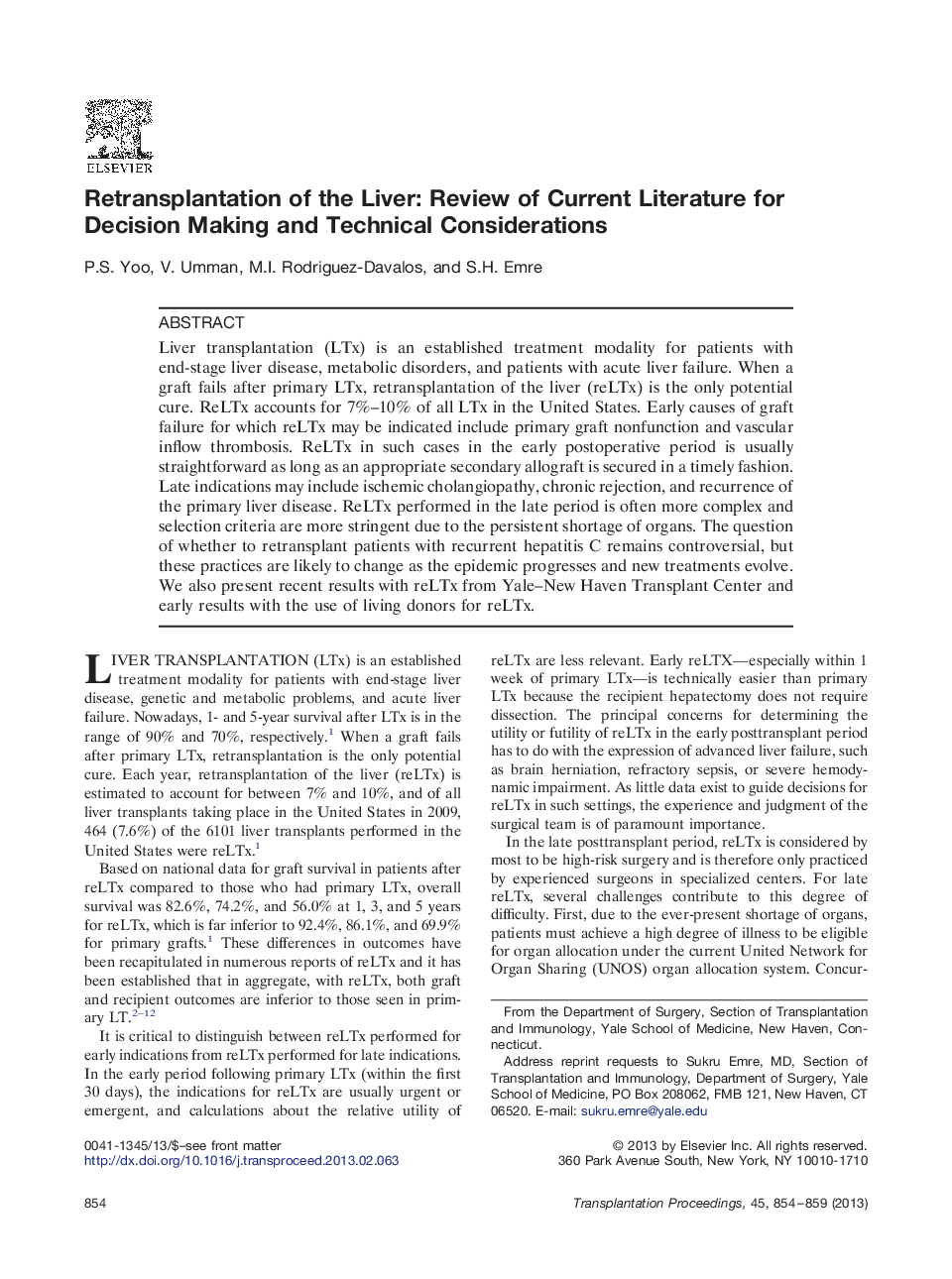| Article ID | Journal | Published Year | Pages | File Type |
|---|---|---|---|---|
| 6246500 | Transplantation Proceedings | 2013 | 6 Pages |
Abstract
Liver transplantation (LTx) is an established treatment modality for patients with end-stage liver disease, metabolic disorders, and patients with acute liver failure. When a graft fails after primary LTx, retransplantation of the liver (reLTx) is the only potential cure. ReLTx accounts for 7%-10% of all LTx in the United States. Early causes of graft failure for which reLTx may be indicated include primary graft nonfunction and vascular inflow thrombosis. ReLTx in such cases in the early postoperative period is usually straightforward as long as an appropriate secondary allograft is secured in a timely fashion. Late indications may include ischemic cholangiopathy, chronic rejection, and recurrence of the primary liver disease. ReLTx performed in the late period is often more complex and selection criteria are more stringent due to the persistent shortage of organs. The question of whether to retransplant patients with recurrent hepatitis C remains controversial, but these practices are likely to change as the epidemic progresses and new treatments evolve. We also present recent results with reLTx from Yale-New Haven Transplant Center and early results with the use of living donors for reLTx.
Related Topics
Health Sciences
Medicine and Dentistry
Surgery
Authors
P.S. Yoo, V. Umman, M.I. Rodriguez-Davalos, S.H. Emre,
